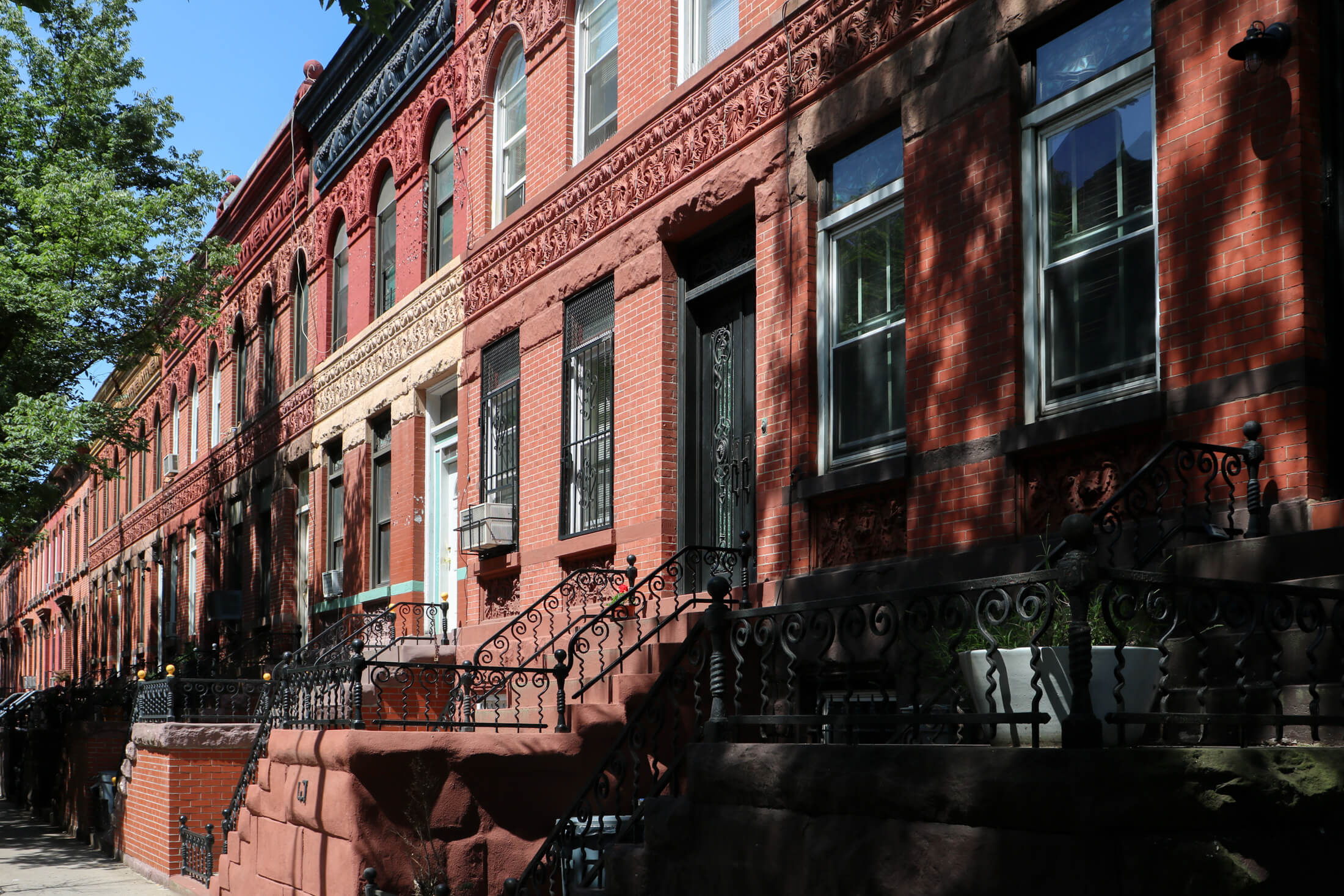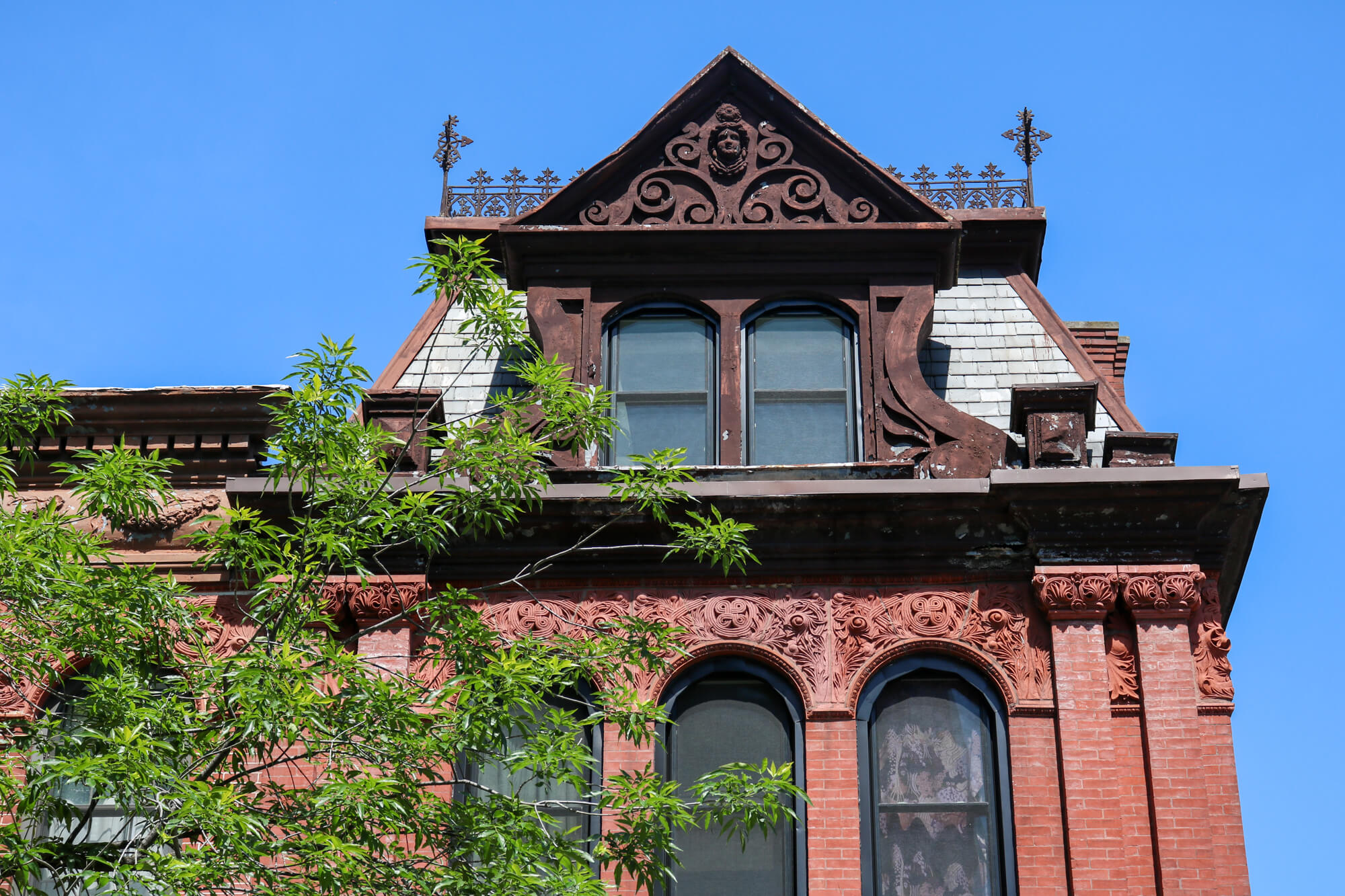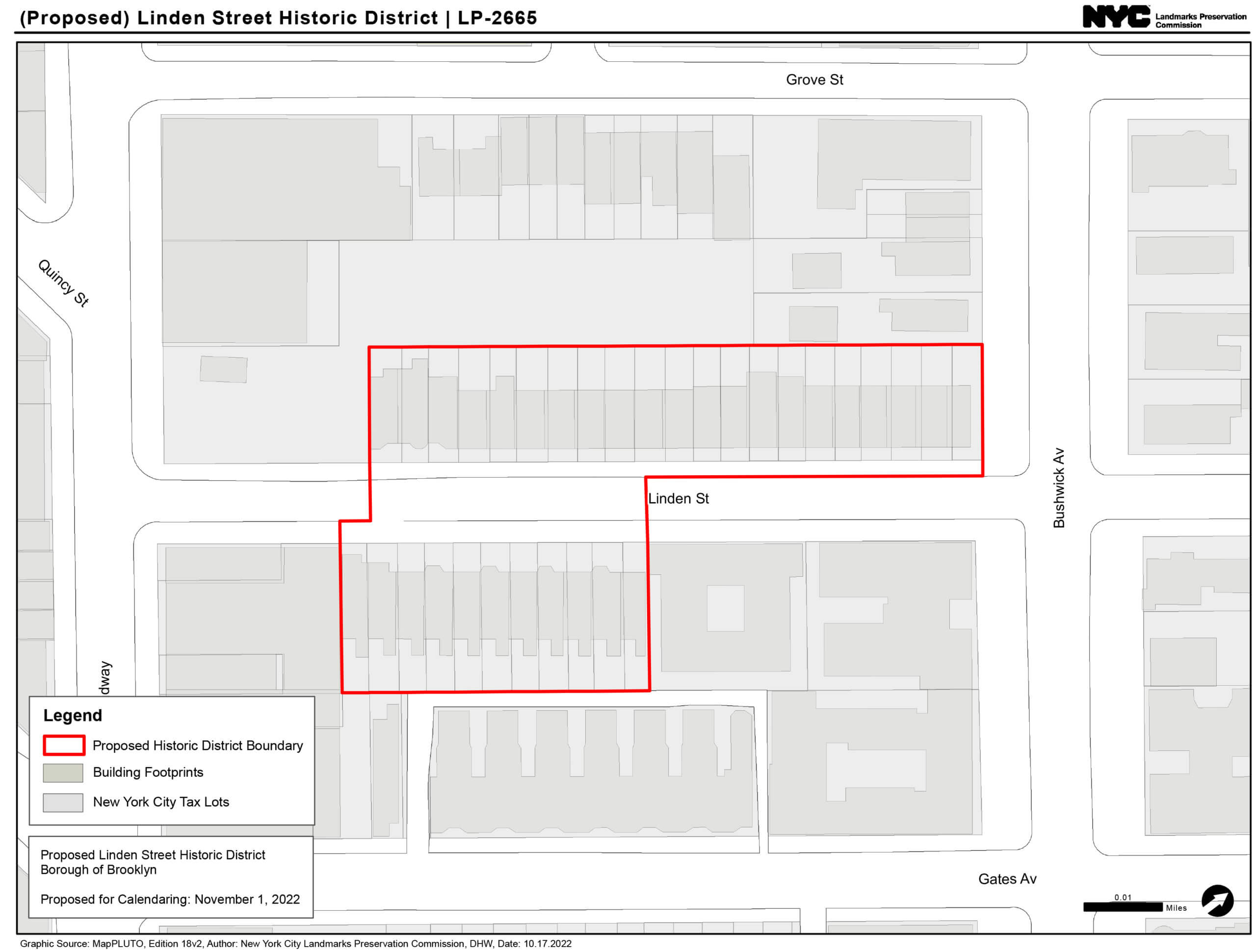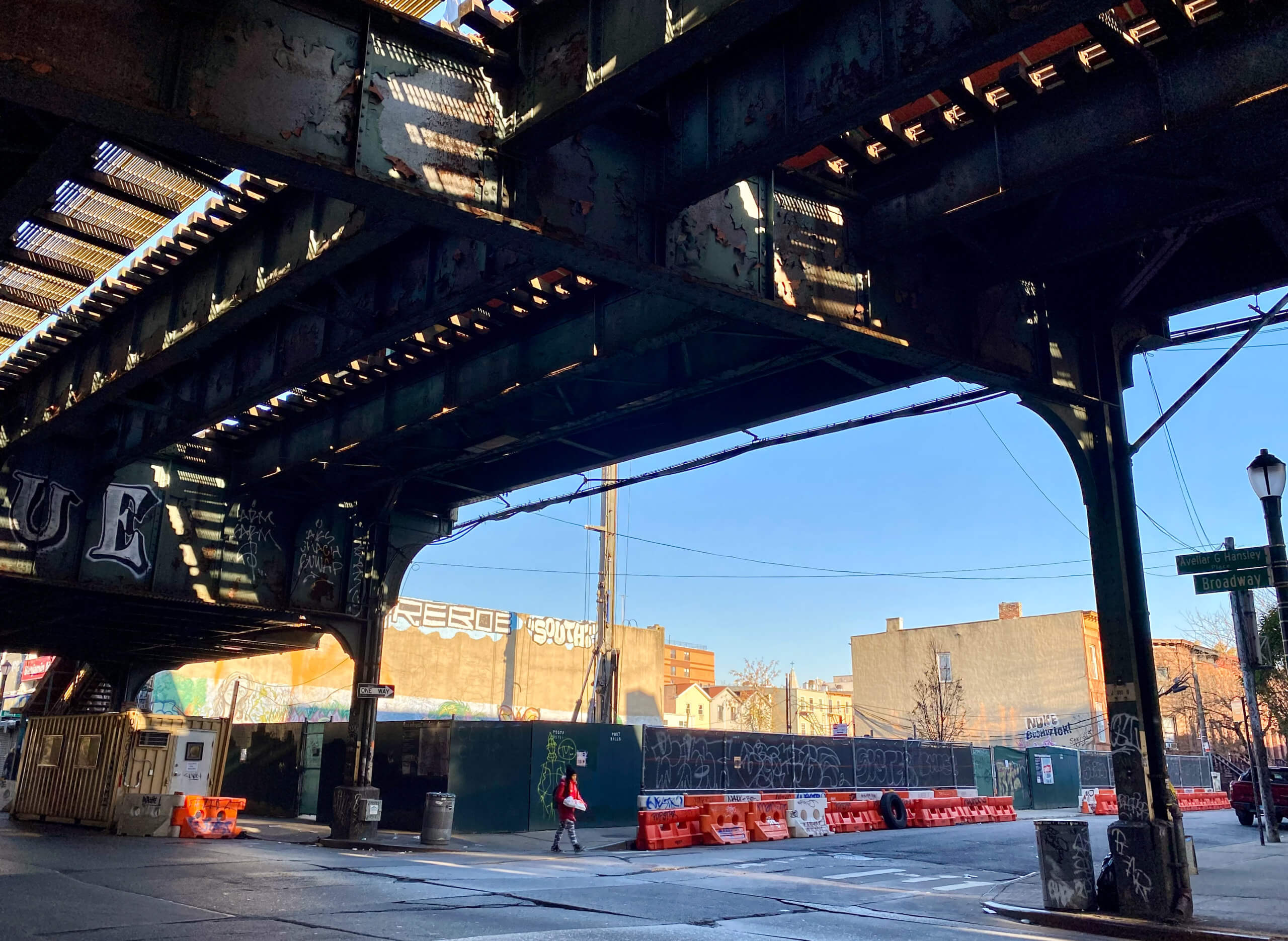Linden Street Block Becomes Bushwick’s First Landmarked Historic District
A remarkable section of Linden Street has been designated Bushwick’s first historic district by the city’s Landmarks Preservation Commission following a unanimous vote.

A view of the now-landmarked stretch of Linden Street in 2018. Photo by Susan De Vries
A remarkable section of Linden Street has been designated Bushwick’s first historic district by the city’s Landmarks Preservation Commission following a unanimous vote by commissioners at today’s meeting.
The landmarked area includes a “remarkably intact group of 32 brick and brownstone row houses built between 1885 and 1901,” as the agency put it, on the block between Broadway and Bushwick Avenue.
“Designed by Brooklyn architects, these distinctive row houses represent the highly successful integration of late 19th century picturesque styles: the Queen Anne, the Neo-Grec, and the Romanesque and Renaissance revivals,” LPC researcher Marianne Hurley told the commissioners.


The district covers areas on both sides of Linden Street, including 10 Queen Anne-style brick row houses with extraordinary terra-cotta decoration that run from 37 to 55 Linden Street and start at the corner of Bushwick Avenue.
Designed by architect Frank Keith Irving, the unusual row has motifs on cornices and terra-cotta not seen anywhere else in New York City. The quality of the decoration is also unusual for homes intended for middle-class owners.
They were commissioned in 1888 by prominent lawyer and one of the founders of the Williamsburgh Savings Bank, Samuel M. Meeker, Hurley said. Meeker, and later his family, developed much of the section of Linden Street that is now landmarked. The historic district, New York City’s 156th, is both architecturally and historically significant, Hurley said, and “stands out as a unified streetscape with a strong sense of place”.
At a public hearing in February, locals largely spoke in favor of designation, with eight people testifying in support of designation and one, a member of Open New York who lives in the neighborhood, speaking against. Hurley said in addition, the commission received six letters in support of designation, and none in opposition.
“We’re just so delighted that Bushwick is finally getting its day in the sun. And yes, we believe that these buildings are of great historic importance, and also that landmarking larger parts of Bushwick is absolutely essential to maintain Bushwick’s character and maintain its beauty,” Bushwick Avenue resident and Bushwick Historic Preservation Association member Laura Paris said at the public hearing.
Hurley noted how Linden Street had come to reflect “the diversity and vitality of its surrounding neighborhood,” which had started as farmland and gone through many stages of development and turbulence, and how the designated section “has remained intact over the years, resulting in a consistent historic landscape.”

While support for the designation was unanimous, Commissioner Michael Goldblum said he would have preferred the whole block be landmarked, rather than the select 32 houses.
“I think that the drawing of the boundaries so tightly around the brownstones, is not reflective of the actual reality of the experience of the block,” he said, adding by not designating the apartment buildings and an empty lot on the block, it jeopardized “the notion of the block as as a kind of architectural and experiential unit.”
“I would urge the research department to consider that – we have lots of districts that have non-contributing lots which would allow for modification of what’s going on there. I think it is if the unit is the block, I think we should designate the block.”

LPC Chair Sarah Carroll said boundaries are one of the “most rigorously evaluated aspects” of the commission’s research work, and “historic districts are designed or designated to protect and recognize architectural and historically significant buildings through regulation.”
“We regulate changes to protect historic building fabric and so if there are undeveloped lots on the edge or non-contributing buildings on the edges up there, you know, by definition, there really isn’t historic fabric to be regulated,” she said. Carroll added the apartment buildings on Linden Street didn’t speak to the historic significance of the block.
“I think we are very careful about not overreaching and trying to designate non-contributing buildings at the edges of historic districts so that we have something that we’re truly regulating and not sort of trying to deter development or curate future development where there isn’t historic fabric.”
Commissioner Mark Ginsberg, one of the recently appointed commissioners, said what Goldblum was talking about was controlling scale, and that was under the purview of the city’s zoning resolution.
“I tend to be concerned about over designation of non-contributing buildings and think that’s an issue that should be looked at more from a city planning and zoning perspective than a Landmarks perspective.”
Related Stories
- Locals Largely Support Bushwick’s First Historic District in Linden Street Landmarks Hearing
- Tower of 20 Stories to Go Up on Bushwick Corner as LPC Mulls Landmarking Neighboring Homes
- Bushwick’s Linden Street Could Be Area’s First Historic District Following LPC Vote
Email tips@brownstoner.com with further comments, questions or tips. Follow Brownstoner on Twitter and Instagram, and like us on Facebook.









What's Your Take? Leave a Comment